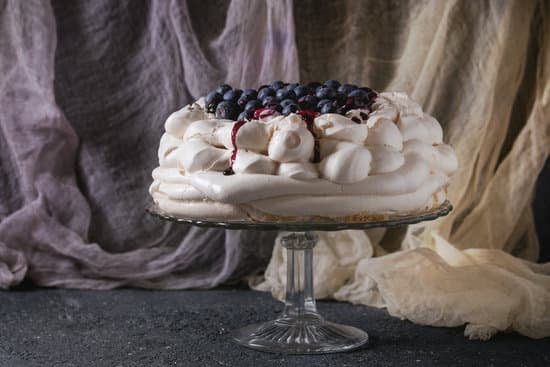Are you looking to learn how to decorate a cake with cream cheese frosting? Cream cheese frosting is known for its creamy and tangy flavor, making it a popular choice for cake decorating.
Its versatility allows for a wide range of decorative techniques, making it a favorite among home bakers and professional pastry chefs alike. In this article, we will explore the step-by-step process of using cream cheese frosting to create beautifully decorated cakes that are as visually appealing as they are delicious.
Cream cheese frosting is beloved for its rich and indulgent taste, with a perfect balance of sweetness and tanginess. It adds a luscious creaminess to cakes and pairs well with various flavors, making it an ideal choice for decorating different types of cakes. From classic red velvet to decadent carrot cake, cream cheese frosting can elevate the overall presentation and taste of your baked creations.
In addition to its delicious flavor, cream cheese frosting offers endless opportunities for creativity when it comes to cake decoration. Whether you’re aiming for a rustic homemade look or an intricate professional design, utilizing cream cheese frosting opens up a world of possibilities. Join us as we delve into the art of decorating cakes with this delectable frosting variety.
Choosing the Right Cake for Cream Cheese Frosting
When it comes to decorating a cake with cream cheese frosting, selecting the right cake is crucial to ensure that the flavors and textures complement each other. Here are some tips for choosing the perfect cake to pair with cream cheese frosting:
1. Consider the Flavor: The creamy and tangy flavor of cream cheese frosting pairs well with a variety of cake flavors. Classic choices like red velvet, carrot, and spice cake are popular options that enhance the rich and slightly tart taste of cream cheese frosting. The contrast between sweet and tangy creates a delightful balance in every bite.
2. Texture Matters: When choosing a cake for cream cheese frosting, it’s important to consider the texture of the cake as well. Moist and dense cakes like banana bread or zucchini cake provide a sturdy base for the luscious cream cheese frosting without being too delicate or crumbly. A firm texture allows for smooth application of the frosting and creates a satisfying mouthfeel when enjoyed together.
3. Experiment with Combinations: Don’t be afraid to think outside the box when pairing cakes with cream cheese frosting. Explore unique flavor combinations such as pumpkin spice cake with maple cream cheese frosting or lemon poppy seed cake with a zesty citrus-infused cream cheese frosting. The key is to find cakes that not only taste delicious but also offer an ideal canvas for showcasing the creamy goodness of the frosting.
Choosing the right cake for cream cheese frosting opens up endless possibilities for creating visually stunning and delectable desserts. Keep these tips in mind when selecting a cake to decorate with cream cheese frosting, and let your creativity run wild as you embark on this delightful baking adventure.
Preparing the Cream Cheese Frosting
Step-by-Step Instructions
To prepare a smooth and creamy cream cheese frosting for decorating a cake, start by bringing the cream cheese and butter to room temperature. This will ensure that they blend together easily and result in a smooth texture. In a large mixing bowl, beat the softened cream cheese and butter together until well combined.
Gradually add powdered sugar and vanilla extract, continuing to beat until the frosting is fluffy and free of any lumps. If necessary, adjust the consistency with additional powdered sugar or a small amount of milk.
Achieving the Perfect Consistency
The key to successfully decorating a cake with cream cheese frosting lies in achieving the perfect consistency. The frosting should be stiff enough to hold its shape when piped, but also soft enough to spread easily over the cake without tearing it. If the frosting is too stiff, add a small amount of milk or cream to loosen it up. On the other hand, if it’s too soft, incorporate more powdered sugar until desired thickness is achieved.
Storing and Handling
Once prepared, cover the cream cheese frosting with plastic wrap or transfer it to an airtight container to prevent it from drying out or forming a crust. If you plan on using different colors for decorating, portion out separate batches of frosting before tinting each one accordingly.
When ready to use, let the frosting come to room temperature for easy handling and application onto the cake layers. Remember that chilled frosting can be difficult to work with when decorating, so allow it to soften slightly before use.
Crumb Coating the Cake
Importance of Crumb Coating
Before decorating a cake with cream cheese frosting, it is essential to apply a crumb coat to ensure a smooth and professional-looking finish. The crumb coat acts as a foundation for the frosting, sealing in any loose crumbs and creating a clean base for the final decoration. Without a crumb coat, the final layer of frosting may become speckled with crumbs, resulting in an uneven appearance.
Techniques for Applying a Crumb Coat
To crumb coat a cake, start by applying a thin layer of cream cheese frosting to the entire surface of the cake. Use an offset spatula to spread the frosting evenly, ensuring that it covers the entire cake and fills in any gaps or imperfections. Once the initial layer is applied, refrigerate the cake for about 15-20 minutes to allow the crumb coat to set before adding the final layer of frosting.
Achieving a Smooth Surface
After applying the crumb coat and allowing it to set, carefully inspect the cake for any areas that may need additional smoothing or touch-ups. Use a clean offset spatula or bench scraper to gently smooth out any rough patches in the frosting, being careful not to remove too much or disturb the crumb coat beneath. A smoothly crumb-coated cake will provide an excellent base for adding decorative designs and details with cream cheese frosting.
Piping and Decorating Techniques
Decorating a cake with cream cheese frosting offers a delicious and visually appealing way to showcase your cake decorating skills. Piping and decorating techniques play a crucial role in creating beautiful designs and adding a professional touch to the finished product. Whether you’re looking to create intricate patterns or simple yet elegant designs, mastering the art of piping and decorating with cream cheese frosting can take your cake to the next level.
When it comes to piping and decorating techniques, the right tools can make all the difference. Different piping tips can be used to achieve various designs, from delicate rosettes to intricate borders and lettering.
It’s important to familiarize yourself with the different types of piping tips available and practice using them to create different effects with the cream cheese frosting. Additionally, it’s essential to ensure that the frosting is at the right consistency for piping – too thin, and it won’t hold its shape; too thick, and it will be difficult to pipe smoothly.
In addition to traditional piping techniques, don’t be afraid to get creative with decorative designs using cream cheese frosting. Experiment with adding embellishments such as edible flowers, chocolate shavings, or fresh fruit on top of the frosted cake for an extra pop of color and flavor.
These additional decorations can take your cake from ordinary to extraordinary and add a personal touch that reflects your creativity as a baker. With a little practice and experimentation, you’ll soon discover how versatile cream cheese frosting can be for creating stunning cake decorations that are sure to impress your friends and family.
Creating Texture and Dimension
When it comes to decorating a cake with cream cheese frosting, creating texture and dimension can take your design to the next level. There are several techniques you can use to add visual interest and depth to your cake using cream cheese frosting.
One popular method for adding texture is by using different piping tips. For example, you can use a star-shaped tip to create a textured swirl pattern on the surface of the cake. Additionally, using a petal tip can help you create delicate floral designs that add a touch of elegance to your cake. Experimenting with various piping tips and practicing different techniques will allow you to discover unique ways to add texture to your cake decorations.
In addition to piping, incorporating other decorative elements such as edible glitter, sprinkles, or fondant accents can also help create dimension in your design. Edible flowers or fresh fruit can be used to add pops of color and visual interest. These elements not only make the cake more visually appealing but also provide an opportunity to showcase your creativity and personal style.
Lastly, don’t be afraid to experiment with different textures such as smooth vs. rough or glossy vs. matte surfaces on the cake. By varying the textures within your design, you can create contrast and draw attention to specific areas of the cake.
| Texture Techniques | Data |
|---|---|
| Piping Tips | Experiment with various piping tips and techniques for unique texture |
| Decorative Elements | Incorporate edible glitter, sprinkles, fondant accents, flowers, or fruit for added dimension |
| Varying Textures | Experiment with smooth vs. rough surfaces for contrast and visual interest |
Adding Finishing Touches
Once you have successfully piped and decorated your cake with cream cheese frosting, it’s time to add the finishing touches to make it truly standout. One way to elevate the look of your cake is by incorporating additional decorations such as sprinkles, fruit, or edible flowers. These extra touches not only add visual appeal but also complement the flavors of the cream cheese frosting and cake.
When adding sprinkles, consider the color palette and theme of your cake. Sprinkles come in a variety of shapes, sizes, and colors, so choose ones that will enhance the overall design. Whether you opt for rainbow sprinkles for a fun and playful look or gold or silver dragees for an elegant touch, sprinkles can take your cake to the next level.
Fruit is another versatile option for adding a pop of color and freshness to your cake. Consider using berries such as strawberries, blueberries, or raspberries for a burst of flavor and visual appeal. Additionally, citrus fruits like lemon or orange slices can provide a vibrant and zesty contrast to the creamy texture of the frosting.
For a more sophisticated finish, edible flowers can be used to adorn your cake. Flowers such as roses, pansies, or lavender can create a stunning floral arrangement on top of the cream cheese frosting. Just be sure to use edible flowers that are safe for consumption and free from pesticides.
By adding these finishing touches, you can truly make your cake with cream cheese frosting into a work of art that is not only delightful to eat but also visually captivating. Get creative with your decorations and let your imagination flow as you put the final touches on your masterpiece.
Tips for Serving and Storing
When it comes to serving and storing a cake decorated with cream cheese frosting, there are a few important tips to keep in mind to ensure the best results. Here are some guidelines to follow:
- It’s important to serve the cake at the right temperature. Cream cheese frosting can become too soft if left out at room temperature for too long, so be sure to chill the cake until just before serving.
- If you have leftover cake, store it in the refrigerator to maintain the freshness of the cream cheese frosting. Cover the cake with plastic wrap or place it in an airtight container to prevent it from drying out or absorbing any odors from other foods in the fridge.
- When serving the cake, consider slicing it with a hot, clean knife for smooth and neat slices. Wiping the knife with a warm, damp cloth between each slice can help create clean cuts without dragging any frosting along.
Properly serving and storing a cake with cream cheese frosting is essential for preserving its flavor and appearance. By following these tips, you can ensure that your beautifully decorated cake stays fresh and delicious for as long as possible.
Whether you’re making a simple birthday cake or an elaborate celebration centerpiece, knowing how to decorate a cake with cream cheese frosting can take your baking skills to the next level. With its creamy texture and tangy flavor, cream cheese frosting offers a delicious complement to a variety of cakes. By following these tips for serving and storing your creation, you can enjoy your beautifully decorated masterpiece while maintaining its freshness.
Conclusion
In conclusion, decorating a cake with cream cheese frosting offers a delightful opportunity to showcase creativity and elevate the visual appeal of a delicious dessert. The creamy and tangy flavor of cream cheese frosting provides a versatile canvas for creating intricate designs, textures, and decorative elements. From selecting the right cake to mastering piping techniques and adding finishing touches, there are endless possibilities for expressing artistry through cake decorating.
As outlined in this article, the process of decorating a cake with cream cheese frosting begins with choosing a cake that complements the unique flavor profile of the frosting. It is important to prepare the frosting to the perfect consistency for smooth application and use crumb coating techniques for achieving a flawless surface. Different piping and decorating techniques can be utilized to create visually stunning designs, while incorporating texture and dimension adds depth and complexity to the overall presentation.
For those embarking on their own cake decorating projects using cream cheese frosting, it is essential to remember that practice makes perfect. Experimenting with various piping tips, design elements, and finishing touches can lead to beautiful and unique creations. Whether it’s a special occasion or simply an opportunity for creative expression, learning how to decorate a cake with cream cheese frosting can be an enjoyable journey filled with delicious rewards.
Frequently Asked Questions
How Do You Cover a Cake With Cream Cheese Frosting?
To cover a cake with cream cheese frosting, start by placing a dollop of frosting in the center of the cake and spreading it outward with a spatula. Once the top is covered, work on the sides, smoothing the frosting as you go.
Should I Refrigerate Cream Cheese Frosting Before Frosting Cake?
It is recommended to refrigerate cream cheese frosting before frosting a cake, especially if it’s too soft or runny. Chilling the frosting for about 30 minutes can make it easier to spread and shape on the cake.
How Do You Thicken Cream Cheese Frosting for Decorating?
Thicken cream cheese frosting for decorating by gradually adding powdered sugar until reaching the desired consistency. If it becomes too thick, adjust with small amounts of milk or heavy cream until it’s suitable for piping and decorating.

Welcome to our cake decorating blog! My name is Destiny Flores, and I am the proud owner of a cake decorating business named Cake Karma. Our mission is to provide delicious, beautiful cakes for all occasions. We specialize in creating custom cakes that are tailored specifically to each customer’s individual needs and tastes.





